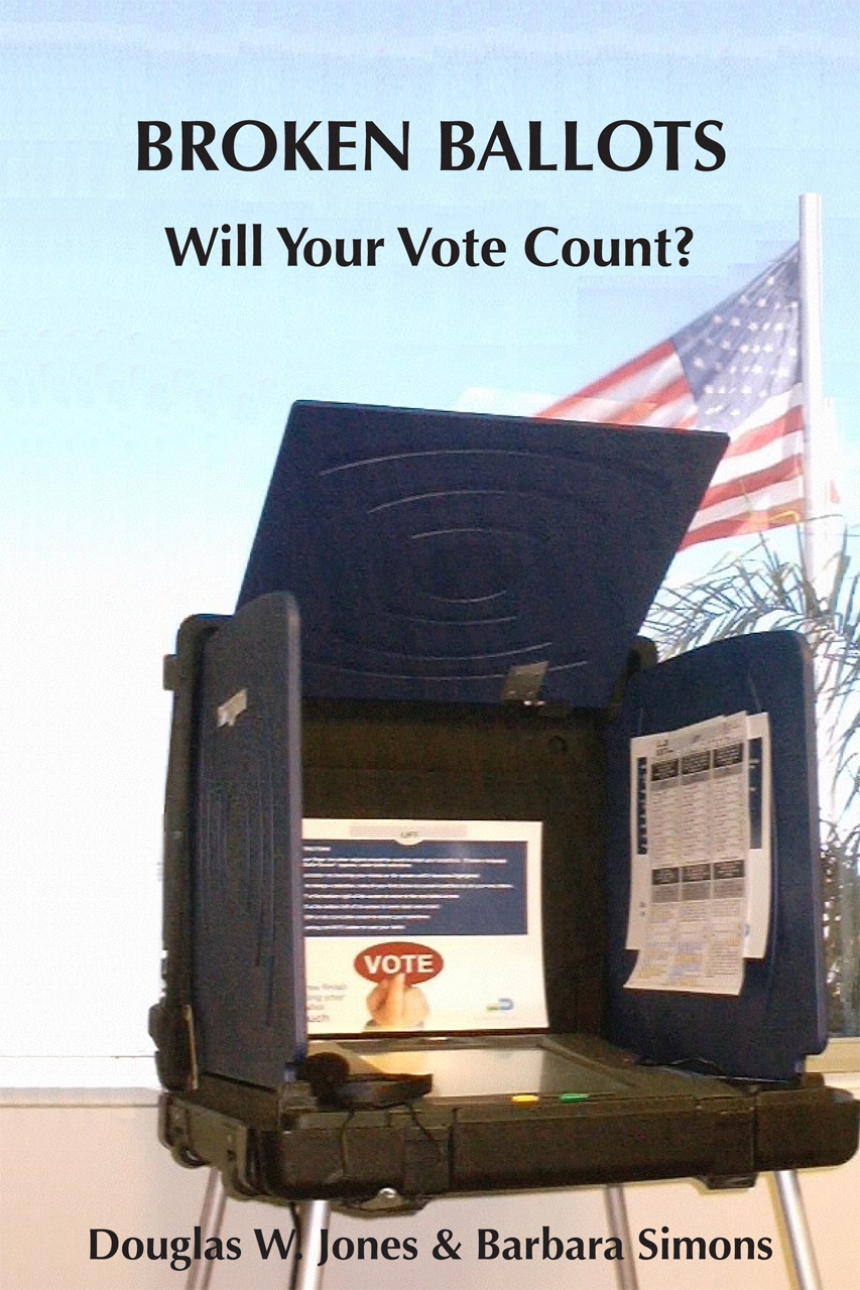Distributed for Center for the Study of Language and Information
Broken Ballots
Will Your Vote Count?
For many of us, the presidential election of 2000 was a wake-up call. The controversy following the vote count led to demands for election reform. But the new voting systems that were subsequently introduced to the market have serious security flaws, and many are confusing and difficult to use. Moreover, legislation has not kept up with the constantly evolving voting technology, leaving little to no legal recourse when votes are improperly counted. How did we come to acquire the complex technology we now depend on to count votes? Douglas Jones and Barbara Simons probe this question, along with public policy and regulatory issues raised by our voting technologies. Broken Ballots is a thorough and incisive analysis of the current voting climate that approaches American elections from technological, legal, and historical perspectives. The authors examine the ways in which Americans vote today, gauging how inaccurate, unreliable, and insecure our voting systems are. An important book for election administrators, political scientists, and students of government and technology policy, Broken Ballots is also a vital tool for any voting American.
Reviews
Table of Contents
1. Introduction
A Book Overview
2. Déjà Vu All Over Again
2.1 The First Round
2.2 The First Voting Mechanisms
2.3 The Australian Ballot
2.4 How Secret?
2.5 Voting Machines
2.6 Industrialization
2.7 Consolidation and Monopoly
2.8 Adopting Voting Machines
3. How Did We Get Here?
3.1 Scandal in Chicago
3.2 Fraud and Reform in the Interwar Era
3.3 Problems with Mechanical Voting Machines
3.4 The Rise of the Punched Card
3.5 The Trouble With Chad
3.6 The Success of the Votomatic
3.7 What’s Wrong with the Votomatic
4. Filling the Bubble
4.1 Central-Count Machines
4.2 Precinct-Count Machines
4.3 Mark-Sense Machines in Action
4.4 What is a Vote?
4.5 The Human Element
4.6 Image-Based Mark Sensing
4.7 New Directions
5. Trusting in Technology
5.1 Voting by Electricity
5.2 The First Generation at the Polls
5.3 Second Generation DRE Voting Systems
5.4 What’s Wrong with DRE Voting?
5.5 Voter Verifiability
5.6 Experimental Studies
5.7 What Happened in Sarasota?
6. Establishing a Standard
6.1 The Press for Standards
6.2 The 1990 Voting System Standards
6.3 2002 and Interim Standards
6.4 The Help America Vote Act of 2002
6.5 The IEEE steps in
6.6 Continuing Developments
6.7 International Standards
7. The Problems with Diebold
7.1 Overview
7.2 Early Events
7.3 Early State Diebold Studies
7.4 Demonstrations of Election Rigging
7.5 Some Later State Diebold Studies
7.6 Linda Lamone and Maryland
7.7 What Can We Learn from Diebold?
8. The California Soap Opera
8.1 Some Early Events
8.2 Shelley Battles Vendors & Election Officials
8.3 California’s Revolving Door
8.4 More Diebold Revelations
8.5 The Top to Bottom Review
8.6 Conclusion
9. Voters with Disabilities
9.1 A Story
9.2 A Second Story
9.3 Many Voices
9.4 Some Early Legislation and Litigation
9.5 The AAPD
9.6 Vendor Financial Contributions
9.7 Lawsuits
9.8 How Accessible are DREs?
9.9 What Lies Ahead?
10. The Right to Vote
10.1 Some Background
10.2 Issues Relating to Voter Registration
10.3 Studies and Proposed Reforms
10.4 Voter Registration Databases (VRDs)
10.5 The Future of VRDs
11. Internet Voting
11.1 The DC Pilot Test
11.2 Internet Risks
11.3 Early Reports
11.4 Misconceptions
11.5 Ignoring the Obvious
11.6 Military Voting
11.7 Some Other Countries
11.8 The Future of Internet Voting
12. Missed Opportunities
12.1 The Role of Public Interest Groups
12.2 The Help America Vote Act (HAVA)
12.3 Efforts to reform HAVA
12.4 The 2008, 2010, 2012 Elections and Beyond
13. Voting, Counting, and Auditing
13.1 Manually Counting Ballots
13.2 Post-Election Audits and Recounts
13.3 Examining Other Aspects of Elections
13.4 Other Voting Models
13.5 Why Audits Matter
14. Conclusion
14.1 Recommendations
14.2 Looking Ahead
Appendix: Disability Rights Groups’ Lawsuits
A.1 Lawsuits involving Jim Dickson or the AAPD
A.2 Lawsuits involving the NFB
References
Index

